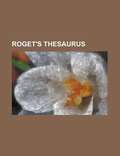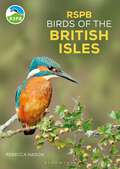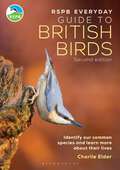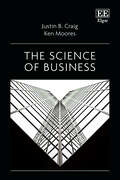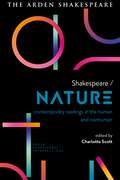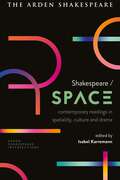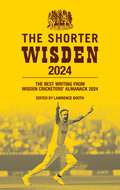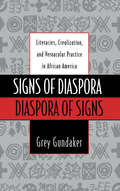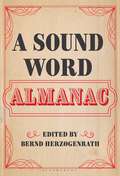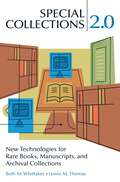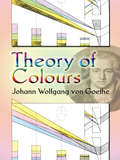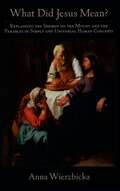- Table View
- List View
Robert Hooke’s Contributions to Mechanics: A Study in Seventeenth Century Natural Philosophy
by F.F. CentoreIn the history of science and philosophy and the philosophy of nature the name Robert Hooke has been largely ignored. If he is occasionally men tioned, it is usually in one of two ways: either he is briefly referred to in passing, or, he is viewed through the eyes of some later giant in the history of science and philosophy such as Sir Isaac Newton. Both approaches, however, do Hooke an injustice. Tn the academic world of today, there is no scholarly study available of Hooke's actual place in the history of science and philosophy with respect to his doctrines and accomplishments within the area of mechanics. Such a situation constitutes an unfortunate lacuna in the academic life of the world in our time. It is the more unfortunate because, in his time, Robert Hooke played an important role in the intellectual life of his world. Hooke, a contemporary of Boyle and Newton, lived from 1635 to 1703. For most of his active intellectual life he held the position of Curator of Experiments to the Royal Society of London. As a result of his own initi ative and of directives given him by other members of the Society, Hooke performed hundreds of experiments designed to explore the secrets of na ture so that men might better understand God's creation. In this treatise I will disengage from the large disorganized welter of monographs and trea tises left by Hooke all the material pertinent to the science of mechanics.
Roget's Thesaurus
by Peter RogetExcerpt: . . . banner, hang out a banner &c. n. ; wave the hand, wave a kerchief; give the cue &c. (inform) 527; show one's colors; give an alarm, sound an alarm; beat the drum, sound the trumpets, raise a cry. sign, seal, attest &c. (evidence) 467; underline &c. (give importance to) 642; call attention to &c. (attention) 457; give notice &c. (inform) 527. Adj. indicating &c. v. , indicative, indicatory; denotative, connotative; diacritical, representative, typical, symbolic, pantomimic, pathognomonicobs3, symptomatic, characteristic, demonstrative, diagnostic, exponential, emblematic, armorial; individual &c. (special) 79. known by, recognizable by; indicated &c. v. ; pointed, marked. Capable of being denoted denotableobs3; indelible. Adv. in token of; symbolically &c. adj. ; in dumb show. Phr. ecce signumLat; ex ungue leonemLat, ex pede HerculemLat; vide ut supra; vultus ariete fortiorLatobs3. - p. 170 - #551. Record. - N. trace, vestige, relic, remains; scar, cicatrix; footstep, footmarkobs3, footprint; pug; track mark, wake, trail, scent, pisteobs3. monument, hatchmentobs3, slab, tablet, trophy, achievement; obelisk, pillar, column, monolith; memorial; memento &c. (memory) 505; testimonial, medal; commemoration &c. (celebration) 883. record, note, minute; register, registry; roll &c. (list) 86; cartulary, diptych, Domesday book; catalogue raisonneFr; entry, memorandum, indorsementobs3, inscription, copy, duplicate, docket; notch &c. (mark) 550; munimentobs3, deed &c. (security) 771; document; deposition, proces verbalFr; affidavit; certificate &c. (evidence) 467. notebook, memorandum book, memo book, pocketbook, commonplace book; portfolio; pigeonholes, excerptaobs3, adversariaLat, jottings, dottingsobs3. gazette, gazetteer; newspaper, daily, magazine; almanac, almanackobs3; calendar, ephemeris, diary, log, journal, daybook, ledger; cashbookobs3, petty cashbookobs3; professional journal, . .
RSPB Birds of the British Isles (RSPB)
by Rebecca NasonA pocket-friendly photographic field guide to 290 birds of the British Isles.RSPB Birds of the British Isles features all regularly occurring birds in Britain, Ireland and the Isle of Man, covering familiar year-round species such as Wren and Sparrowhawk, winter and summer visitors including Purple Sandpiper and Arctic Tern, and a selection of rarer birds.Featuring concise identification text and expert photography, this photographic reference guide is suitable for both beginner and experienced birdwatchers alike. Species accounts include succinct descriptions of each bird's appearance, behaviour, calls and songs, and seasonal movements. The guide also identifies where to see each species and showcases this clearly through up-to-date distribution maps of the British Isles. Author and photographer Rebecca Nason has carefully chosen over 500 colour photographs to illuminate key identification points, including photos of male and female birds for sexually dimorphic species.Whether you are birdwatching in your garden or exploring wetlands, woodlands, mountains or coastlines, RSPB Birds of the British Isles is an ideal companion.
The RSPB Everyday Guide to British Birds: Identify our common species and learn more about their lives
by Charlie ElderA perfect companion for nature enthusiasts and birdwatching beginners, in a revised and updated edition. The RSPB Everyday Guide to British Birds describes 80 common and widespread species that we're most likely to come across in the British Isles and explains what makes each of them unique. Packed with fascinating facts and written in a friendly style, this RSPB guide is ideal for anyone who wants to identify and learn more about the birds they encounter, whether that's in their back garden or while they're out and about in urban and suburban settings or the British countryside.Alongside new photos to show both male and female birds where relevant, this second edition includes updates to species distribution and population numbers, as well as information on seasonal changes to British birds and how to attract birds to your garden. The guide also features updates to the UK's Red List species and a new section on birds that are flying high despite the current biodiversity crisis. From owls to finches and crows to woodpeckers, this RSPB guide is ideal for beginner and casual birdwatchers looking to discover more about British birds.
The Science of Business
by Justin B. Craig Ken MooresAdopting a multidisciplinary approach, Justin Craig and Ken Moores reinforce the positioning of business as a science and remind the reader that those involved in the practice of business are, in fact, social scientists. Showcasing a novel science of business framework, the book is populated with economic, entrepreneurial, accounting, financial, marketing and management discipline perspectives.Incorporating critical insights from practising business scientists, this incisive book emphasises the significance of theoretical explanations and scientific foundations, valuing science, theory and practice as equally important. Chapters rigorously analyse the works of seminal thinkers who have helped to formalise the position of business as a social science. The evolution of economics, entrepreneurship, accounting, finance, marketing and management disciplines as standalone scientific pursuits is explored.The Science of Business is a reminder that there is a business component to most activities and will prove to be an indispensable resource for academics, researchers, educators and students in many arenas, including government, engineering, medicine, law as well as traditional domains such as entrepreneurship, management education, organisation studies, and management. Business practitioners and advisors across a broad spectrum will similarly benefit from the book’s practical implications.
The Secret Lives of Animals
by Greg McLeodThe natural world is full of awesome surprises, and the animal kingdom is no exception. As The Secret Lives of Animals reveals, it seems that the more we discover about the unusual species that populate our planet, the more we understand just how ingenious, resourceful and downright creative they can be!Did you know that red pandas are not only incredibly cute, but also master escape artists able to flee their enclosures in high security zoos all over the world with alarming frequency? Or that beautiful manta rays have not only been observed recognizing their own reflection in mirrors, but are also able to identify friendly divers and ask for their help when they’re in a bit of a jam? Or that elephants, as well as having famously impressive memories, are also sophisticated communicators who send signals to each other using a wide range of body language? Or that parrots, as well as being amazing mimics, are able to learn dance moves? YouTube star Snowball, the dancing cockatoo, has a very entertaining fourteen-move repertoire.With charming and humorous illustrations from BAFTA-award-winning artist Greg McLeod (half of The Brothers McLeod), The Secret Lives of Animals is a window into some of the most complex and impressive minds of the animal kingdom, revealing the little-known skills and natural intuition that have allowed them to survive – and often have a little fun along the way.
Shakespeare / Nature: Contemporary Readings in the Human and Non-human (Arden Shakespeare Intersections)
by Lucy Munro Professor Sonia Massai Dr Farah Karim Cooper Professor Gordon McMullanShakespeare / Nature sets new agendas for the study of nature in Shakespeare's work. Offering a rich exploration of the intersections between the human and non-human worlds, the chapters focus on the contested and persuasive language of nature, both as organic matter and cultural conditioning.Rooted in close textual analysis and historical acuity, this collection addresses Shakespeare's works through the many ways in which 'nature' performs, as a cultural category, a moral marker and a set of essential conditions through which the human may pass, as well as affect. Addressing the complex conditions of the play worlds, the chapters explore the assorted forms through which Shakespeare's nature makes sense of its narratives and supports, upholds or contests its story-telling. Over the course of the collection, the contributors examine plays including Macbeth, Julius Caesar, The Tempest, The Taming of the Shrew, Othello, Love's Labour's Lost, Hamlet, Timon of Athens and many more. They discuss them through the various lenses of philosophy, historicism, psychoanalysis, gender studies, cosmography, geography, sexuality, linguistics, environmentalism, feminism and robotics, to provide new and nuanced readings of the intersectional terms of both meaning and matter.Approaching 'nature' in all its multiplicity, this collection sets out to examine the divergent and complex ways in which the human and non-human worlds intersect and the development of a language of symbiosis that attempts to both control and create the terms of human authority. It offers an entirely new approach to the subject of nature, bringing together disparate methods that have previously been pursued independently to offer a shared investment in the intersections between the human and non-human worlds and how these discourses shape and condition the emotional, organic, cultural and psychological landscapes of Shakespeare's play worlds.
Shakespeare / Space: Contemporary Readings in Spatiality, Culture and Drama (Arden Shakespeare Intersections)
by Lucy Munro Professor Sonia Massai Dr Farah Karim Cooper Professor Gordon McMullanShakespeare / Space explores new approaches to the enactment of 'space' in and through Shakespeare's plays, as well as to the material, cognitive and virtual spaces in which they are enacted. With contributions from 14 leading and emergent experts in their fields, the collection forges innovative connections between spatial studies and cultural geography, cognitive studies, memory studies, phenomenology and the history of the emotions, gender and race studies, rhetoric and language, translation studies, theatre history and performance studies. Each chapter offers methodological reflections on intersections such as space/mobility, space/emotion, space/supernatural, space/language, space/race and space/digital, whose critical purchase is demonstrated in close readings of plays like King Lear, The Comedy of Errors, Othello and Shakespeare's history plays. They testify to the importance of space for our understanding of Shakespeare's creative and theatrical practice, and at the same time enlarge our understanding of space as a critical concept in the humanities. It will prove useful to students, scholars, teachers and theatre practitioners of Shakespeare and early modern studies.
The Shorter Wisden 2024: The Best Writing from Wisden Cricketers' Almanack 2024
The most famous sports book in the world, Wisden Cricketers' Almanack has been published every year since 1864. The selected writings from the 161st edition contained in this eBook offer trenchant opinion, compelling features and an authoritative voice on the worldwide game.The Shorter Wisden is a distillation of what's best in its bigger brother – and the 2024 edition of Wisden is crammed, as ever, with the best writing in the game. Wisden's digital version includes the influential Notes by the Editor, and all the front-of-book articles. In essence, The Shorter Wisden is a glass of the finest champagne rather than the whole bottle. In an age of snap judgments, Wisden's authority and integrity are more important than ever. Yet again this year's edition is truly a “must-have” for every cricket fan.@WisdenAlmanack
Signs Of Diaspora / Diaspora Of Signs: Literacies, Creolization, And Vernacular Practice In African America
by Grey GundakerChallenging monolithic approaches to culture and literacy, this book looks at the roots of African-American reading and writing from the perspective of vernacular activities and creolization. It shows that African-Americans, while readily mastering the conventions and canons of Euro-America, also drew on knowledge of their own to make an oppositional repertoire of signs and meanings. Distinct from conventional script literacy on the one hand, and oral culture on the other, these "creolized" vernacular practices include writing in charms, use of personal or nondecodable scripts, the strategic renunciation of reading and writing as communicative tools, and writing that is linked to divination, trance, and possession. Based on extensive ethnographic research in the Southeastern United States and the West Indies, Gundaker offers a complex portrait of the intersection of "outsider" conventions with "insider" knowledge and practice.
Society, Schools and Progress in Tanzania: The Commonwealth and International Library: Education and Educational Research
by J. Cameron W. A. DoddEducation and Educational Research: Society, Schools, and Progress in Tanzania focuses on the educational system in Tanzania. The book first offers information on the economy, territorial domain, form of government, and progress of education in Tanzania. The text also outlines the road to independence of this country. The rise of the African people to political power and the introduction to international relations are underscored. The text also examines the policies and administration of the Tanzanian government from 1945 to 1961. The selection also traces the development of education in Tanzania in two periods: 1945 to 1956 and 1957 until 1961. The institution of educational programs, reforms, and legislation during these periods, as well as the development of education outside the school system, are underlined. The text also examines the policies and administration of the Tanzanian government from 1961 to 1966, and also the progress in education during this period. The educational reforms, programs, and legislation instituted during 1961 to 1966 are then discussed. The book is a vital source of data for readers interested in the development of education in Tanzania.
“Something that I read in a book”: vol. 2: Yeats Writings (Clemson University Press)
by Wayne ChapmanThis book is a resource to enable scholars and students in Yeats studies to explore the materials in his library, which, together with his unpublished papers and manuscripts, forms part of the writer’s archive in the National Library. Continuing from the first volume (Reading Notes), Volume II describes copies of books he wrote or edited solely in his name and subsequently revised or marked for other purposes, on occasion aided by his wife and others.This book could not have been written without the generous participation of the Yeats family over many years. Their legacy, now entrusted to the National Library, is robust and endless in potential. This book is about individual cases but also the building of an oeuvre.
“Something that I read in a book”: vol. 1: Reading Notes (Clemson University Press)
by Wayne ChapmanThis book is a resource to enable scholars and students in Yeats studies to explore the materials in his library, which, together with his unpublished papers and manuscripts, forms part of the writer’s archive in the National Library. Generally, this first volume describes the evidence that he and his wife, George, left in books by other authors, including extensive indications of close reading and thinking on a surprising range of subjects. This book could not have been written without the generous participation of the Yeats family over many years. Their legacy, now entrusted to the National Library, is robust and endless in potential. This book is about individual cases but also the building of an oeuvre. In short, this book enriches our understanding of Yeats’s accomplishment as a writer in over fifty years of creative effort and nearly seventy-four years of abundant life.
A Sound Word Almanac
This almanac of sound words important to artists and scholars highlights words that expand the way we speak (and write) about sonic experiences.Why write about sound, and how? If sonic philosophy is the attempt "to think about sound by philosophical means," then a metaphilosophical debate appears almost immediately on the horizon: What is called for is an understanding about sound and language, but also about the preconditions of musical understanding. What is at stake is the question of language and sound, as well as expanding how we speak about sonic experience.This almanac tackles these questions from artistic, experimental and personal perspectives. An assemblage of nearly 70 practitioners and theoreticians, artists and scholars offer their favorite 'sound word.' These sound words are onomatopoetical, mythological, practical; words of personal importance to the artists and their craft; words from their memory, related to sound. Many entries are not in English – some are untranslatable – and all are accompanied by a personal, explanatory, poetic entry. These are words that have the potential to change our perspective on listening-musicking-thinking.
South Carolina Driver’s Manual
by South Carolina Department of Motor VehiclesSouth Carolina Driver’s Manual
Special Collections 2.0: New Technologies for Rare Books, Manuscripts, and Archival Collections
by Beth M. Whittaker Lynne M. ThomasA critical examination of Web 2.0 tools used in special collections, archives, and museums, with an emphasis on using interactive technology to create and preserve content.Based on surveys and firsthand research across the archivist's profession, Special Collections 2.0: New Technologies for Rare Books, Manuscripts, and Archival Collections offers essential advice and practical ideas for creating, collecting, and preserving born-digital materials for optimal long-term access—using the best of what the new Web has to offer. Special Collections 2.0 surveys the web's new options for interconnectivity and interactivity tool by tool, exploring the benefits and shortcomings of applying each to the special collection and archives profession. It combines expert analysis of the pros and cons of Web 2.0 with numerous reports of how wikis, blogs, photosharing, social networks, and more are already being put to work in this essential field. Creators, researchers, and caretakers of the historic record—even those anxious about using the Internet—will understand the best ways to put Web 2.0 to work in the service of our cultural heritage.
The Subject Bibliography of the Social Sciences and Humanities: International Series of Monographs in Library and Information Science
by Barbara M. HaleInternational Series of Monographs in Library and Information Science, Volume 12: The Subject Bibliography of the Social Sciences and Humanities focuses on subject bibliographies of the humanities and social sciences. The manuscript first outlines the development of subject bibliography in the 16th up to 20th centuries, including developments in subject bibliography of social sciences and humanities and theory of bibliography. The book then discusses subject bibliography and flow of information. Topics include information storage and retrieval, scholarly communications, and other library tools. The text surveys the alphabetical and chronological arrangements of subject bibliographies, including the arrangement of selected bibliographies. Current and retrospective unannotated bibliographies and indexes; current and retrospective bibliographical reviews; and grading and abstracts are underscored. The book is a vital reference for readers wanting to explore humanities and social sciences.
Teilhard Lexicon: Understanding the Language, Terminology and Vision of the Writings of Pierre Teilhard de Chardin
by Sion CowellWritten to enable researchers and students to better understand the specialised language of Teilhard's transdisciplinary approach, which he found himself compelled to develop as a means of expressing that extraordinary vision of a universe in process of convergence towards a cosmic centre of unity he identifies with the Cosmic Christ. All quotations in the Lexicon have been sourced from the French originals. The work includes a full bibliography of Teilhard's works in French and English. 2005 marks the 50th anniversary of Teilhard's death. Several conferences are planned to mark this anniversary.
Theory of Colours: Translated From The German, With Notes (Dover Fine Art, History Of Art Series)
by Johann Wolfgang Goethe Charles L. EastlakeThe wavelength theory of light and color had been firmly established by the time the great German poet published his Theory of Colours in 1810. Nevertheless, Goethe believed that the theory derived from a fundamental error, in which an incidental result was mistaken for a elemental principle. Far from affecting a knowledge of physics, he maintained that such a background would inhibit understanding. The conclusions Goethe draws here rest entirely upon his personal observations.This volume does not have to be studied to be appreciated. The author's subjective theory of colors permits him to speak persuasively of color harmony and aesthetics. These notions may evoke a positive response on their merits, but even among those who regard them as pure fantasy, the grace and style of Goethe's exposition provide abundant rewards. Although his scientific reasoning on this subject has long since been dismissed, modern readers continue to appreciate the beauty and sweep of Goethe's conjectures regarding the connection between color and philosophical ideas. In addition, he offers insights into early 19th-century beliefs and modes of thought as well as a taste of European life during the Enlightenment.
Top Ten Global Justice Law Review Articles 2007 (Terrorism: Documents of International and Local Control, Second Series)
by Amos N GuioraTop Ten Global Justice Law Review Articles 2007 is a thorough and accessible review of the most salient, the most controversial, and the most illuminating essays on security law in the previous calendar year. In this edition, Professor Amos Guiora presents the ten most vital and pertinent law review articles from 2007 written by both scholars who have already gained international prominence as experts in security law as well as emerging voices in the security-law debate. These articles deal with issues of terrorism, security law, and the preservation of civil liberties in the post-9/11 world. The chosen selections derive not just from the high quality and expertise of the articles' authors, but equally from the wide diversity of legal issues addressed by those authors. Guiora combines the expertise of scholars from such accredited institutions as Harvard, Stanford, the U.S Military Academy and the U.S. Department of Defense to provide a valuable resource for scholars and experts researching this important subject area. This annual review provides researchers with more than just an authoritative discussion on the most prominent security debates of the day; it also educates researchers on new issues that have received far too little attention in the press and in academia. These expert scholars and leaders tackle and give voice to these issues that range from cyberterror to detention of suspected terrorists to France's tightening of its civil liberties policy to new restrictions on religious philanthropy and beyond. Together, the vast knowledge and independent viewpoints represented by these ten authors make this volume, of what will be an annual review within the Terrorism, 2nd Series, a valuable resource for individuals new to the realm of security law and for advanced researchers with a sophisticated understanding of the field. Top Ten Global Justice Law Review Articles 2007 serves as a one-stop guidebook on how both the U.S. and the world generally are currently waging the war on terror.
What Did Jesus Mean?: Explaining The Sermon On The Mount And The Parables In Simple And Universal Human Concepts
by Anna WierzbickaWhat to Draw and How to Draw It
by E G LutzLearn how to draw, with a masterclass from the man who inspired Walt Disney.Credited with being the inspiration for Walt Disney to pick up a pencil and pursue a career in animation, E G Lutz's method of drawing complex illustrations in gradual, simplified stages paved the way for many of the artists and illustrators who followed him.* Learn how to draw a delightful range of subjects, from animals and people to toys, buildings and landscapes.* Pictures are broken down into simple shapes and lines, which are then built up, with the aid of clear step-by-step instructions, into beautiful drawings.* Simple to follow, yet using principles seen in sophisticated artworks and animations today, this guide can help budding artists of all ages to develop their skills.Nostalgic yet timeless, this historically and culturally important book has inspired so many adults and children to draw and can help you too to discover the delights of creating your own artwork.

